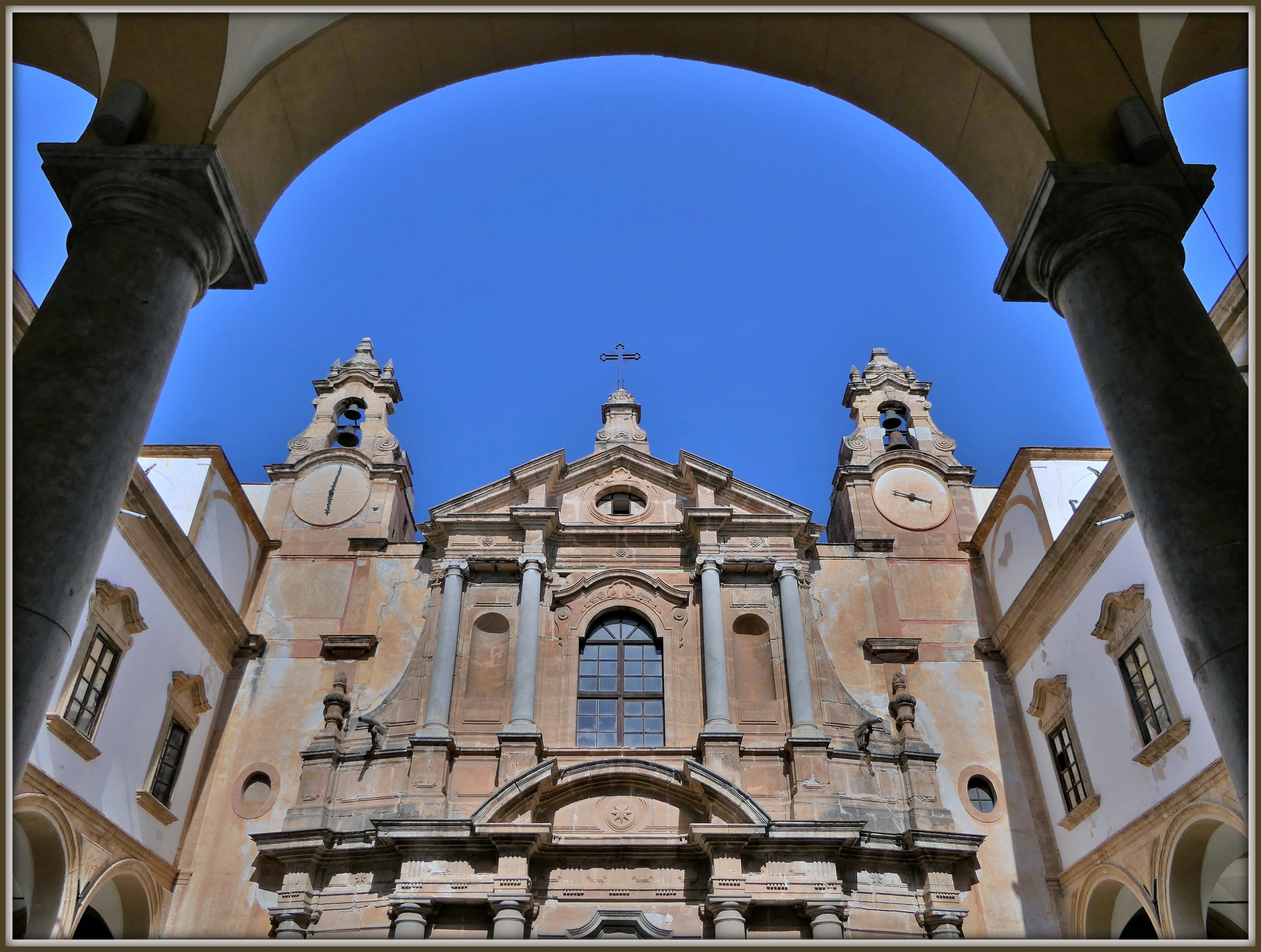
Read English version
Royal Hotel of the Poor
In the Spanish Palermo of 1633, under the reign of Philip IV, the capital of the kingdom was Madrid, which is very far from Palermo and Sicily.
The city was crowded with poor people and beggars. The poor smelt bad and the nobles tried to have them move away from the servants of their palaces, but the poor were too many: beggars, destitute people and outcast and women of ill repute.
To make them harmless, it was decided to host them in the premises of the Serraglio vecchio (Old Menagerie).
In the so-called Serraglio vecchio( no longer in existence) – surrounded by the countryside which sloped down towards the Oreto river, next to a popular cemetery known as Santo Antoninello lo Sicco – the poor were crammed. Therefore, in 1746, Charles III di Borbone started the construction of a new hospice on the main road of Mezzo-Monreale thanks to a project by the architect Orazio Ferretto who soon designed a sumptuous building.
There, where the first stone was laid in the presence of the military and the nobility led by the viceroy himself, Prince Corsini, a cross was planted. In 1722 the construction work brought to completion the façade and partly the structure, so the poor moved from the Vecchio Serraglio to the New Real Hotel of the Poor in a solemn procession. However they found that the structure had not been completed. In fact, the church was not finished and housing was inadequate. The works were completed in the early nineteenth century with the intervention of the architect Venanzio Marvuglia and his disciple Nicolò Puglia.
In the Royal Albergo dei Poveri (Hotel of the Poor) men and women were together, until the men were transferred to the Ricovero della mendicità (Poorhouse) in the district of Malaspina, leaving only women to occupy the building which, since then, has also been known as the Hotel of Poor Women.
In 1839, the fate of this institution was entrusted to the noble Don Francesco Paolo Gravina, prince of Palagonia, philanthropist and benefactor who, after the failure of his marriage, decided to devote himself for the rest of his life to prayer and helping the needy. In those years, the Hotel of Poor Women had about a thousand occupants – mainly women, girls, and many children. Don Francesco thought it right to improve the conditions of those miserable ones to set up a mill and machinery to weave silk. The poor women thus dedicated themselves to making French style silk and linen garments, curtains and clothes for Palermitan people. The silkworms were raised in large stone tanks which are still visible today.
At the death of the Prince, the coffin was accompanied by a great crowd of people and especially the dispossessed; the Prince dies in the “odour of sanctity” and today Don Francesco Paolo Gravina is heading for beatification. The Albergo delle Povere continued to host mainly women and became definitively feminine in 1898. The institution is today entrusted to the Congregation of nuns by the Prince wanted here.
The building develops around three large courtyards; in the central one that functions as an entrance, the facade of the Church of Santa Maria della Purificazione (1773/1799) faces you. The one on the right now belongs to the Sicilian Region and is home to exhibitions and events. The one on the left, run by the nuns, continues to be a hotel for poor women.
The building is spread over two floors, accessed via large baroque staircases, and is surrounded, especially in the back, by small buildings and internal gardens that have had their own functions over time.
Today the monument can be visited during various events.
For information click here
